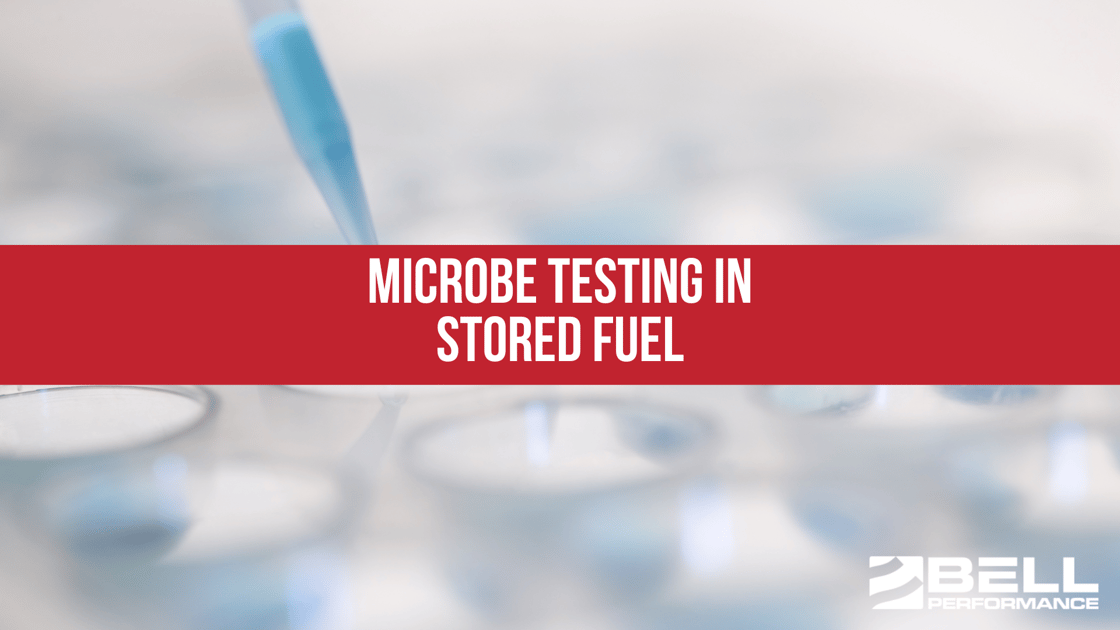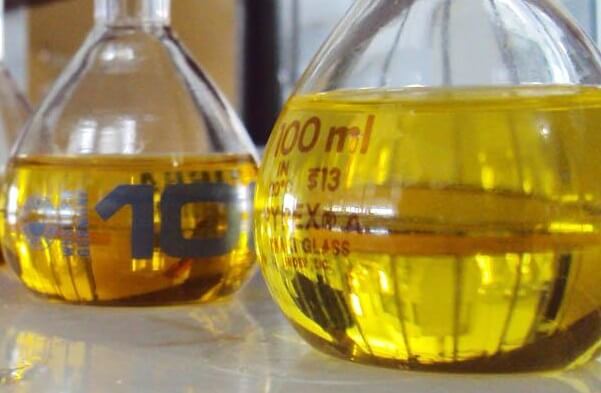Stored Fuel Testing Part 1: What you need to know
As a service to our customers, dealers and friends, Bell Performance hosts quarterly webinars on fuel topics of interest to their friends and their...

Microbial growth in fuel storage tanks can lead to various problems, from corrosion and fuel filter blockages to decreased fuel quality and even engine failure.
![]() In the first part of this podcast episode, we learned about the different types of microbes that can grow in fuel, including bacteria, fungi, and yeast, and the conditions that promote their growth, such as water, nutrients, and warmth.
In the first part of this podcast episode, we learned about the different types of microbes that can grow in fuel, including bacteria, fungi, and yeast, and the conditions that promote their growth, such as water, nutrients, and warmth.
In the second part, we explored the various types of microbial testing available to detect and measure these microorganisms in fuel and the pros and cons of each.
One of the key takeaways from this podcast is the importance of regular microbial testing to prevent and manage microbial growth in fuel storage tanks. As Eric Bjornstad, the host of the Fuel Pulse Show podcast, explains, microbial growth can occur in any fuel storage tank, regardless of its size, design, or location. The only way to know if your fuel is contaminated with microorganisms is to test it using one of the available methods.
The first type of microbial testing discussed in the podcast is the culture test. It involves taking a sample of the fuel and placing it in a nutrient-rich medium to encourage the growth of any microorganisms present. After a few days, the sample is examined under a microscope to identify and count the different types of microbes. While culture tests are relatively inexpensive and easy to perform, they have some drawbacks, including low specificity and sensitivity and the fact that they only detect live microorganisms, meaning they may miss dormant or dead ones.
 The second type of microbial testing discussed in the podcast is the lateral flow transfer device, which works by using antibodies to detect the presence of specific microorganisms in fuel. This method is more specific than the culture test, as it can detect individual strains of microorganisms. However, it is still limited by its sensitivity and the fact that it only provides a qualitative, rather than a quantitative, measurement of microbial growth.
The second type of microbial testing discussed in the podcast is the lateral flow transfer device, which works by using antibodies to detect the presence of specific microorganisms in fuel. This method is more specific than the culture test, as it can detect individual strains of microorganisms. However, it is still limited by its sensitivity and the fact that it only provides a qualitative, rather than a quantitative, measurement of microbial growth.
The third type of microbial testing discussed in the podcast is the ATP bioluminescence test, which measures the amount of adenosine triphosphate (ATP) present in a fuel sample. ATP is a molecule that is found in all living cells and is a marker of microbial activity. The ATP bioluminescence test involves adding a reagent to the fuel sample that reacts with ATP and produces a light that is measured by a luminometer. This method is highly specific and sensitive and can provide a quantitative measurement of microbial growth in fuel, making it ideal for trend analysis and establishing control intervals for individual fuel storage tanks.
While each method has its advantages and disadvantages, the key takeaway from the podcast is that regular microbial testing is essential for preventing and managing microbial growth in fuel storage tanks. As Bjornstad notes, the upfront cost of microbial testing equipment and supplies may seem steep. Still, the cost per test is significantly reduced for companies that perform a high volume of tests or require highly specific and reliable results.
Moreover, by establishing a control interval for each fuel storage tank based on trend analysis of microbial growth over time, companies can make better decisions about when to treat their tanks with biocides or other anti-microbial agents. By understanding the unique microbial fingerprint of each tank, they can avoid overtreating or undertreating their tanks and maximize the life of their fuel and equipment.
The Fuel Pulse Show podcast provides a comprehensive overview of the different types of microbial testing available to detect and measure microbial growth in fuel storage tanks. While each method has its advantages and disadvantages, regular testing using a robust and reliable method like the ATP bioluminescence test is essential for preventing and managing microbial growth, establishing control intervals for individual tanks, and maximizing the life of fuel and equipment.
As with any aspect of fuel management, proactive monitoring and maintenance are key to avoiding costly and potentially dangerous problems.

As a service to our customers, dealers and friends, Bell Performance hosts quarterly webinars on fuel topics of interest to their friends and their...
When it comes to the dual goals of maintaining fuel quality and preventing costly equipment failures that might be fuel-related, proper fuel sampling...
Taking care of today's problematic stored fuels is best done with the three-pronged Hybrid Approach - the right chemicals, the right mechanical...